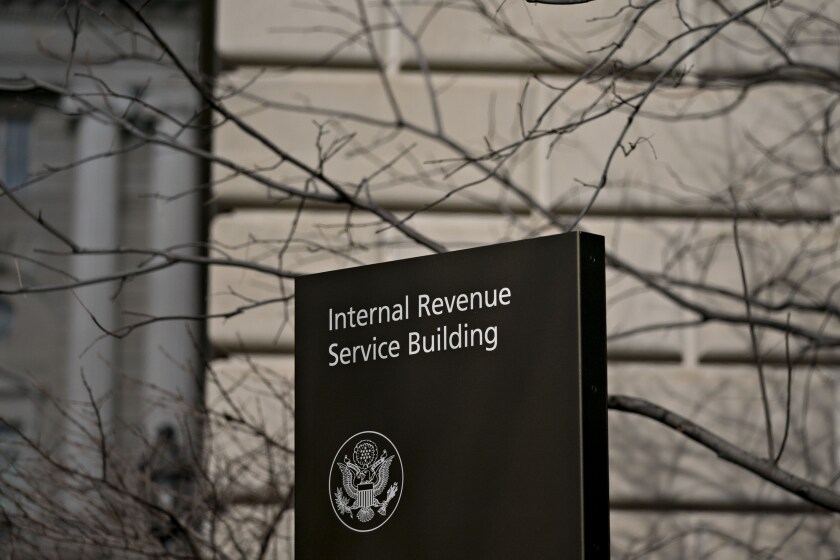The Internal Revenue Service is giving taxpayers until the end of the year before it stops its temporary procedures for faxing in Forms 1045 and 1139 for claiming tentative tax refunds, instead of mailing them, which it has allowed as part of its response to the COVID-19 pandemic.
In April, the IRS began allowing taxpayers to file both forms by fax while many IRS employees worked remotely and were unable to process the mail.
Chintan Shah leads Bloomberg's product strategy for buyside Treasury, Asset-Liability Management (ALM), and Finance solutions, with a focus on Insurance General Accounts, Pension Funds, and institutional cash management. With over 16 years of capital markets and investment management experience, Chintan brings deep expertise in serving the needs of asset owners and asset managers.
He has spent the past eight years at Bloomberg, driving product innovation and client engagement in the ALM and Investment risk space. Prior to Bloomberg, he was part of the Overlays and ALM team at AIG Investments, where he worked on optimizing balance sheet and liability-driven investment strategies. Chintan began his career in interest rate derivatives trading and risk management, holding roles at Barclays and Deutsche Bank.
James Glover is principal, finance & enterprise, at Deloitte.
Dr. Cole Barfield has served as Chief Medical Officer of on-demand virtual care provider First Stop Health since 2024. As a board-certified Internal medicine physician, Dr. Barfield spent the first ten years of his career treating patients in inpatient, outpatient, and virtual primary care settings before co-founding and serving as CMO of Wellview Health, which later merged with SentryHealth before being acquired by First Stop Health in late 2023.
An individual, estate or trust can file Form 1045, Application for Tentative Refund, to apply for a quick tax refund resulting from the carryback of a net operating loss, the carryback of an unused general business credit, the carryback of a net section 1256 contracts loss, or an overpayment of tax due to a claim of right adjustment under section 1341(b)(1) of the Tax Code.

Corporations (other than S corps) can file Form 1139, Corporation Application for Tentative Refund, to apply for a quick refund of taxes from the carryback of a net operating loss (or a loss from operations of a life insurance company), the carryback of a net capital loss, the carryback of an unused general business credit, or an overpayment of tax from a claim of right adjustment under section 1341(b)(1).
The CARES Act, which Congress passed in March in response to the coronavirus crisis, included some provisions allowing companies to carryback their net operating losses for five years and file refund claims, giving them a quick capital infusion in the midst of the pandemic. Taxpayers with a net operating loss arising in a tax year starting in 2018, 2019 or 2020 can carry that loss back to each of the five preceding years unless the taxpayer elects to waive or reduce the carryback. The law also allows a carryback for a two-year period of NOLs for a tax year that began in 2017 and ended during 2018.
Another section of the CARES Act modifies the credit for prior-year minimum tax liability of corporations, including to accelerate the recovery of remaining minimum tax credits of a corporation for its 2019 taxable year from its 2021 taxable year and to allow a corporation to elect instead to recover 100 percent of any of its remaining minimum tax credits in its 2018 taxable year. In April, the IRS began allowing taxpayers on a temporary basis to fax in Forms 1045 and 1139 to expedite the tax refund process.
However, on Wednesday, the IRS added an entry to its Frequently Asked Questions page describing the temporary procedures to say the procedure will end on Dec. 31, 2020. After midnight on New Year’s Eve, the fax numbers will no longer be operational. The IRS noted that the end of the faxing process is independent of any filing due dates. For example, the last day to file Form 1139 electing to take the 100 percent refundable minimum tax credit in 2018, is Dec. 30, 2020.
“Additionally, if you file one application for a tentative refund and claim both the NOL carryback and the minimum tax credit at the same time, you must file the application by the earliest applicable deadline,” the IRS noted.



